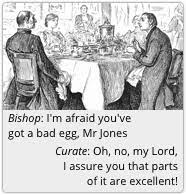Thorsten Loesch
Senior Member
- Joined
- Dec 20, 2022
- Messages
- 460
- Likes
- 533
Maybe, just maybe, those SMSLs and Toppings are real amps
If they work correctly and do not suffer from serious flaws - they are fine.
The problem is that even two seemingly identical amplifiers from two different vendors or two different batches may be different. Parts may have been omitted that were present in earlier versions, or parts may have been substituted by different ones (not always inferior ones, but sometimes better arts will make things worse.
For example, I am very familiar with the problem that Pavel shows. It is normally dealt with by adding a 4 Ohm resistor of a few watt and a sensible value capacitor (usually a few 100nF) costing a few cent.
I actually get a ton of pleasure from getting the device that meets my desired parameters for as little money as possible.
Well, that presumes you can confirm the desired parameters objectively and reliably.
The problem is that most customers cannot do so. Hence they come a site like this and rely on what is presented here. So it is important they get correct and accurate information.
As I said above, an Amplifier with such measured behaviour is in my view broken by design.
The flaw is in my view fatal and excludes operating the amplifier, UNLESS YOU KNOW PRECISELY what the problem is and how it is triggered and how to avoid doing that reliably.
What can trigger this resonance?
Use a speaker with inductive characteristic (e.g. most dome tweeters) enable triggering it.
An external RC snubber could be used to compensate, if you an EE (try 4.7R / 10W Non Inductive resistor in series with 1uF).
Otherwise limiting yourself strictly to speakers with Planar or AMT Tweeters will also work to "disable" this.
If you use speakers with dome tweeters or full range drivers etc and you do not add a snubber, here is what can cause trouble:
1) Anything DSD whatsoever, even with the narrow filter setting.
2) Any Delta-Sigma DAC with modest filtering of noise.
3) Any DAC using some form of slow roll-off Digital filter or MQA.
4) Any DAC without digital filter.
5) Modern LP frontend with clicks & pops or playing DMM LP's.
6) Anything else that creates ultrasonic noise that I have not covered above.
I would not accept a device with such limitations as consumer goods.
Additionally, I'd also like see more compliance info in reviews here.
Does the device have a FCC ID? Technically sale and use without the blessings of the FCC are not permitted in the USA for devices that are "digital" or "switching" anything as they can radiate noise that interferes with radio transmissions or other equipment.
There are electrical safety requirements, ideally we'd see earth bond test (where applicable) and Hi-Pot tests according the international standards.
A lot of gear that comes out of Ch!na is not safe or FCC regulation compliance. In extreme cases the result can see the unwitting customer fined or worse for RF interference and I think we all remember the killer deal (literally) fake iPhone chargers that electrocuted people to death.
I'd think avoiding entanglements for breaking federal regulation or being killed are high up most people's "desired parameters".
Thor



 Blame TI.
Blame TI.